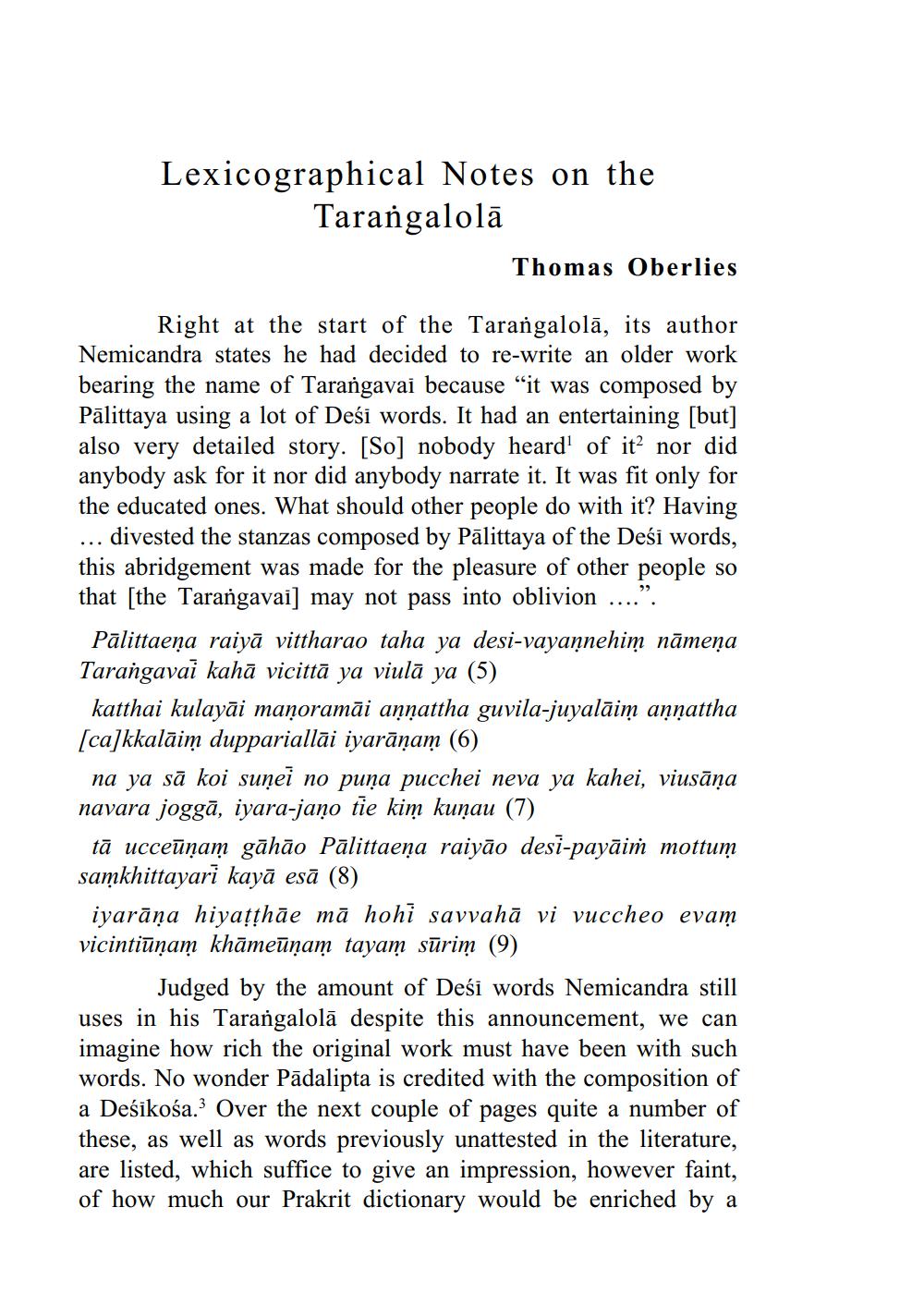________________
Lexicographical Notes on the Tarangalolā
Thomas Oberlies
Right at the start of the Tarangalolā, its author Nemicandra states he had decided to re-write an older work bearing the name of Tarangavai because “it was composed by Pālittaya using a lot of Deśi words. It had an entertaining [but] also very detailed story. [So] nobody heard' of it? nor did anybody ask for it nor did anybody narrate it. It was fit only for the educated ones. What should other people do with it? Having ... divested the stanzas composed by Pālittaya of the Deśi words, this abridgement was made for the pleasure of other people so that [the Tarangavai] may not pass into oblivion ....”.
Palittaeņa raiyā vittharao taha ya desi-vayaņnehim nāmeņa Tarangavai kahā vicittā ya viulā ya (5)
katthai kulayāi maņoramāi aņņattha guvila-juyalāim anṇattha [ca]kkalāim duppariallāi iyarāņam (6)
na ya sā koi suņei no puņa pucchei neva ya kahei, viusāņa navara joggā, iyara-jaņo tie kim kuņau (7)
tā ucceūņam gāhāo Pālittaeņa raiyão desi-payāim mottum samkhittayari kayā esā (8)
iyarāņa hiyatthāe mā hohi savvahā vi vuccheo evam vicintiūņam khāmeūņam tayam sūrim (9)
Judged by the amount of Deśi words Nemicandra still uses in his Tarangalolā despite this announcement, we can imagine how rich the original work must have been with such words. No wonder Pädalipta is credited with the composition of a Deśikośa. Over the next couple of pages quite a number of these, as well as words previously unattested in the literature, are listed, which suffice to give an impression, however faint, of how much our Prakrit dictionary would be enriched by a




